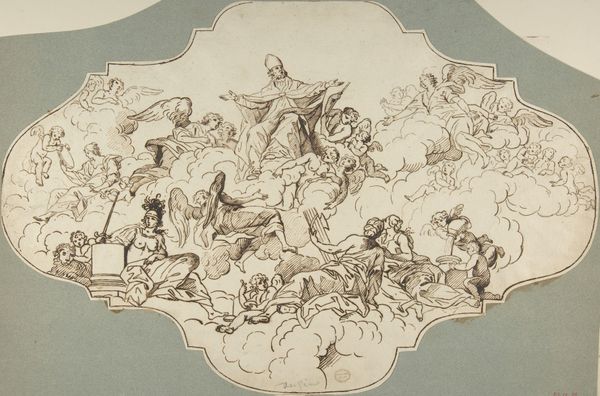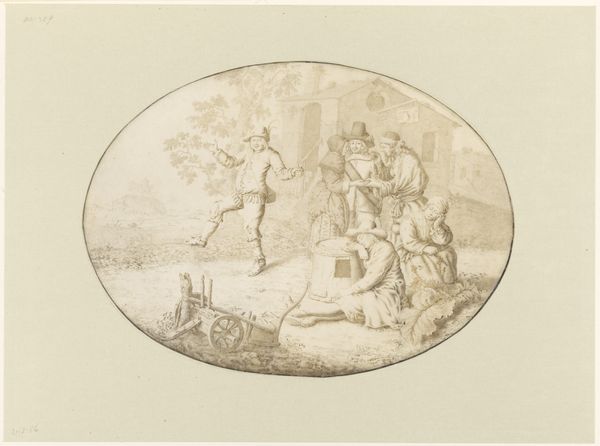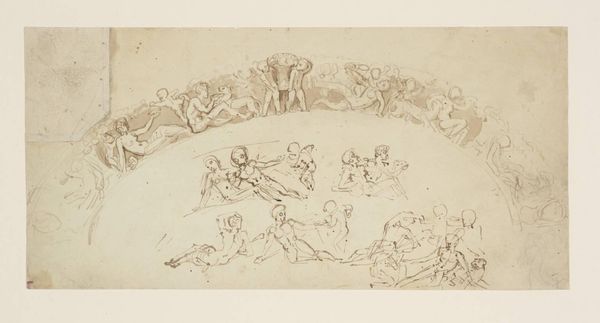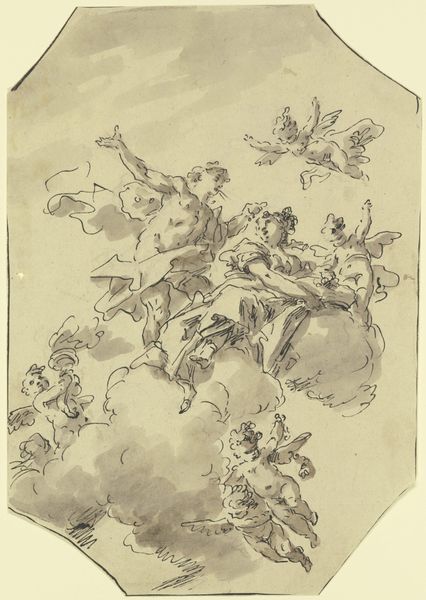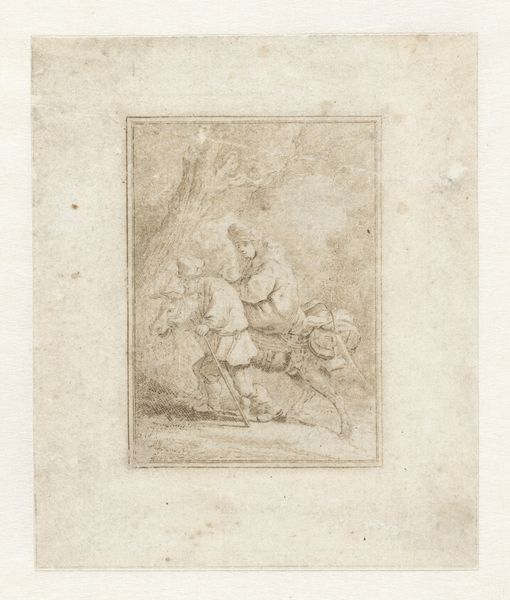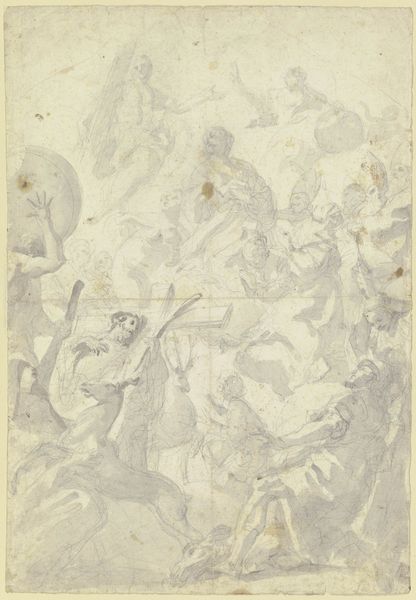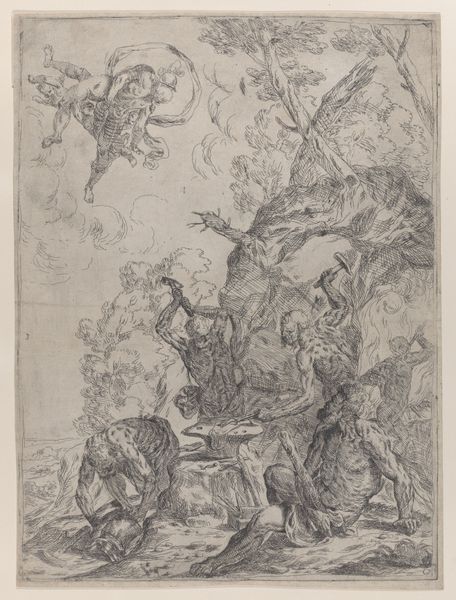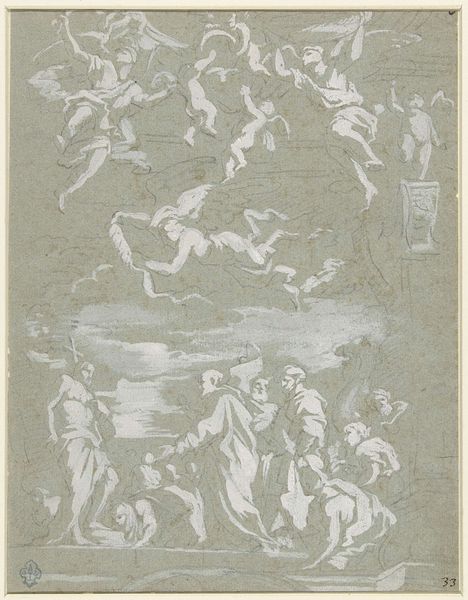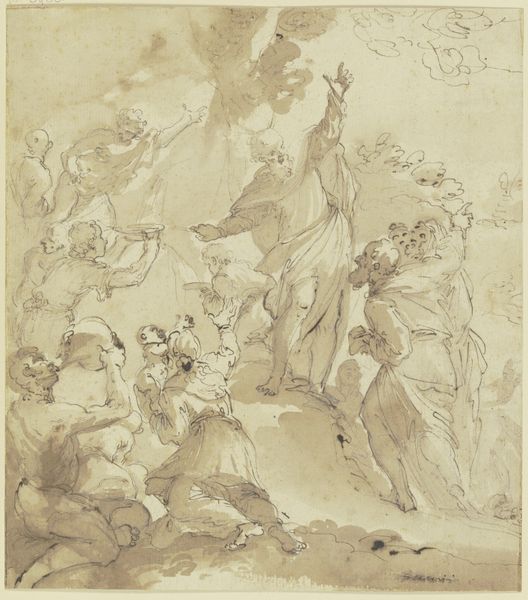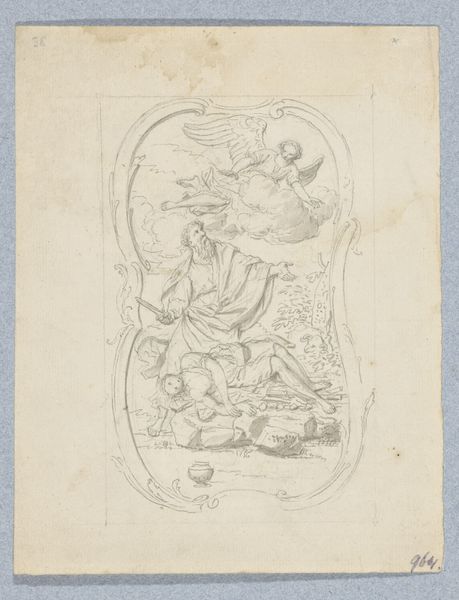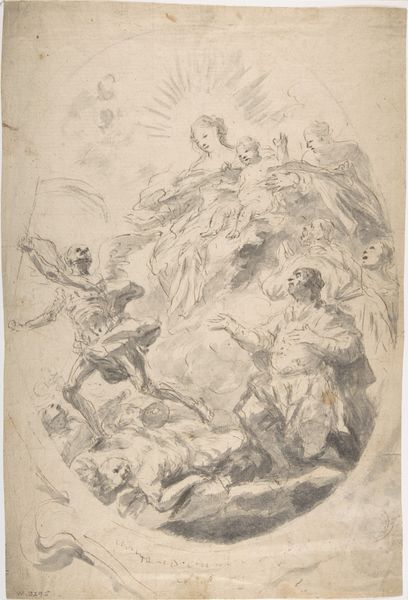
Allegorische Figurengruppe auf Wolken (Concordia, Temperanza und Tranquilità)
0:00
0:00
drawing, ink, chalk
#
drawing
#
allegory
#
baroque
#
figuration
#
ink
#
chalk
Copyright: Public Domain
Curator: It’s a calming vision. The Allegorical Figure Group on Clouds by Gaspare Diziani gives off an airy and dreamlike aura. Editor: Airy indeed. Considering the time in which Diziani was working, the early 1700s, and given what was happening across Europe politically with burgeoning colonialism and ongoing power struggles, this drawing functions as a peaceful respite, an escapist fantasy almost. Curator: Exactly. It presents three female figures – allegories for Concordia, Temperanza, and Tranquilità, representing harmony, temperance, and tranquility– all reclining amidst fluffy clouds, and punctuated by angelic cherubs. A perfect visualization of ideal femininity at a pivotal, transitional, and turbulent historical moment. Editor: And what about that word choice "temperance" when we now understand those restraints disproportionally bind women in the West as tools of a patriarchal society? We must recognize the historical positionality of art objects and analyze how they both upheld and potentially undermined those constraints in popular culture and art history. Curator: I agree, that's key to unpacking the gendered implications here. How concepts like "temperance" served as tools for societal control, and the artist's agency to disrupt those norms through the creative use of composition or color. Here Diziani has a minimal palette, utilizing ink and chalk, creating washes of tones, it doesn’t necessarily scream dissent. However, by illustrating a softer image that implies control over earthly desires could allow viewers to see alternative avenues for control during these times. Editor: Which prompts further thought: to what extent were Baroque ideals inherently complicit within broader power dynamics? Did their overt theatricality unconsciously subvert their own messages of divine authority and gender hierarchies? Curator: A relevant critique! The way such idealized allegories, through a close reading, can reveal both constraints *and* freedoms available, depending on one's societal position, isn’t it? Perhaps Diziani wanted to represent some type of aspiration for his community and himself given what else was transpiring around him at the time. Editor: These types of pieces offer rich opportunity for modern investigation, so much more than what it might show at face value, because we see in Diziani's approach a way of working both within the norms, but suggesting perhaps alternatives, whether intended or not. It’s through the tensions and contradictions where true meaning and discourse blossoms.
Comments
No comments
Be the first to comment and join the conversation on the ultimate creative platform.
